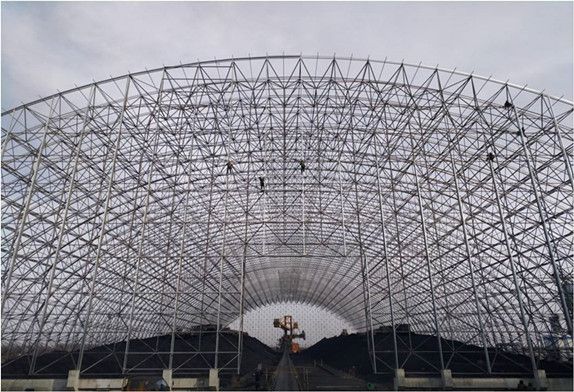In the realm of civil engineering and architecture, the term “frame structure” refers to a fundamental and versatile building system that has been employed for centuries. A frame structure is characterized by its skeletal framework of beams and columns, forming a structural skeleton that supports the load of the building. This article explores the definition of frame structures, their types, key components, and their diverse applications in the construction industry.
Definition of Frame Structure:
A frame structure is a construction system characterized by its reliance on a network of beams and columns to support loads and transfer them to the foundation. Unlike load-bearing wall structures, where the walls themselves bear the weight of the building, frames structures distribute the load horizontally through interconnected frames, providing greater flexibility in architectural design.
Key Components of Frame Structures:
- Beams:
- Definition: Beams are horizontal structural members that span between columns, providing support for the floors and other loads.
- Function: Beams distribute the load imposed on them to the columns, preventing excessive deflection and ensuring structural stability.
- Columns:
- Definition: Columns are vertical structural members that support the loads from beams and transfer them to the foundation.
- Function: Columns play a crucial role in resisting compression forces and maintaining the overall stability of the frame structure.
- Bracing:
- Definition: Bracing elements, such as diagonal braces or shear walls, used to resist lateral forces, such as wind or seismic loads.
- Function: Bracing ensures the structural integrity of the frame, preventing lateral movement and enhancing stability during dynamic events.
- Connections:
- Definition: Connections refer to the joints between beams and columns, and they are critical for transmitting forces efficiently.
- Function: Well-designed connections are essential for the overall performance of the frame structure, ensuring load transfer and resisting deformation.
Types of Frame Structures:
- Rigid Frame Structures:
- Definition: Rigid frame structures have beams and columns rigidly connected, providing stability against lateral movements.
- Applications: Commonly used in industrial buildings, warehouses, and large-span structures.
- Pin-Connected Frames Structures:
- Definition: Pin-connected frames have hinged connections at the joints, allowing rotational movement.
- Applications: Historically used in bridges and some older building structures.
- Moment-Resisting Frames Structures:
- Definition: Moment-resisting frames designed to resist lateral loads through the development of moment connections.
- Applications: Widely used in high-rise buildings and structures in seismic-prone areas.
- Braced Frames Structures:
- Definition: Braced frames utilize diagonal braces to resist lateral forces.
- Applications: Common in multi-story buildings, particularly those in regions prone to earthquakes or high wind loads.
- Portal Frame Structures:
- Definition: Portal frames consist of rigid joints and are commonly used in single-story buildings.
- Applications: Widely employed in industrial buildings, hangars, and agricultural structures.
Applications of Frames Structures:
- Residential Buildings:
- Frame structures provide the flexibility to create open floor plans and accommodate various architectural styles in residential construction.
- Commercial Buildings:
- Skyscrapers and office buildings often rely on moment-resisting frame structures for their ability to withstand both vertical and lateral loads.
- Industrial Facilities:
- Warehouses, manufacturing plants, and distribution centers frequently utilize frame structures due to their adaptability for large, open spaces.
- Bridges:
- Certain bridge designs, such as pin-connected frames, have historically employed frame structures to span distances and withstand dynamic loads.
- Seismic-Resistant Structures:
- In earthquake-prone regions, frame structures with appropriate bracing and moment-resisting features are crucial for ensuring structural safety.
Conclusion:
Frame structures represent a cornerstone in the field of construction, offering a versatile and efficient solution for a wide range of building types. Their adaptability, strength, and ability to accommodate diverse architectural designs have solidified their place in the construction industry. As technology and engineering practices continue to evolve, frame structures remain a vital element in shaping the built environment, providing the skeletal framework upon which innovative and resilient structures stand.

